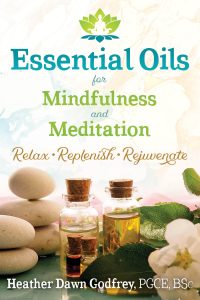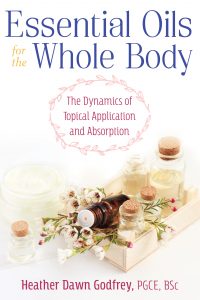- info@aromantique.co.uk
- 07419 777 451
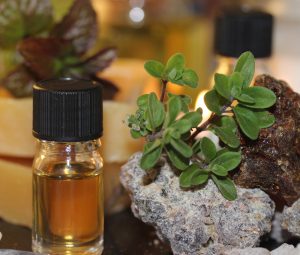
Heather Dawn: Godfrey. P.G.C.E., B.Sc. (Joint Hon)
I originally studied the principles and practice of a number of complementary medicine modalities in a bid to understand their philosophies and methods. In so doing I discovered a common thread between all: that is, energy, in its various forms and manifestation, but especially as a quintessential constant.
Design or coincidence? Meditation came to my awareness when I was a teenager in the early ‘70’s, while searching for my ‘truth’ and trying to make some sense of the ‘world’ and my ‘purpose’ and ‘place’ within it. I realise now, even more than I did at the time, that learning to meditate was a gift bestowed; this simple process of being ‘present’ and aware grounds and gently anchors my psyche in ways I cannot always find the words to explain. And, because one path often leads to another, ‘alternative medicine’ (as it was termed in those days) seamlessly eased gently alongside; the common underpinning tenets of one complementary to the other. Thus I also discovered that practicing meditation lends experiential insight to the subtle principles and expressions of many ancient healing and wellbeing practices; my body truly is my temple as well as my vehicle, and earth, also a gift, is a garden of abundant nourishment and awe; blessings deserving reverent respect, nurture and care.
Of all the complementary medicine modalities I studied, essential oils resonated with my ‘way of being’ and personality the most. This is not to say, however, that essential oils ‘stand alone’ or are better than other integrated modalities, because each modality brings it’s own significant dynamic and special value in terms of holistic wellbeing and health. In reality, essential oils straddle many principles and practices, from phyto-chemistry and botany, to psycho-emotional-spiritual and ethereal; an aspect of their appeal to me. Alongside their subtle and creative dynamics, the chemical components of essential oils present clearly observable, identifiable, measurable physical properties and qualities, evidenced through extensive research exploring their benefits.
For example, essential oils and their components are anti-microbial, skin and wound healing, they are shown to positively alleviate psycho-emotional states, such as mild anxiety and depression, and to stimulate cognitive function, aid mental alertness, concentration, clarity of thought, and memory. They revitalise and aid regeneration of skin tissue, support the immune system. They are attractant, repellent and protective (as they are within plants). Essential oils and their components are used to enhance and protect the integrity of many manufactured foods and household products; they add flavour and increase the shelf life of foods, mask unpleasant tastes and odours, create pleasing and alluring scents, and more.
Applying Essential Oils Holistically
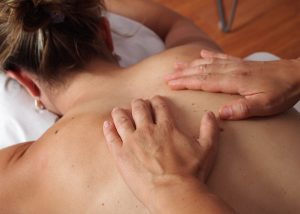 Combined with massage (or soft tissue manipulation), the therapeutic qualities of essential oils may be potentiated. Massage warms surface tissues, aids the circulatory (lymph and blood), nervous and immune systems, and supports absorption of essential oil molecules into the deeper layers of skin and circulatory system, from where they are transported throughout the body.
Combined with massage (or soft tissue manipulation), the therapeutic qualities of essential oils may be potentiated. Massage warms surface tissues, aids the circulatory (lymph and blood), nervous and immune systems, and supports absorption of essential oil molecules into the deeper layers of skin and circulatory system, from where they are transported throughout the body.
I am inspired by the sensual (‘scentual’), psycho-emotional-spiritual influence of essential oils, and their ability to tap into and connect to deep intrinsic feelings, moods, emotions, and memories, to create ambiance, to physically restore, rejuvenate, repair, and protect the whole body, from physical to subtle.
Collectively my books enable the reader to go on their own journey of discovery, to apply essential oils safely and effectively with maximum benefit.
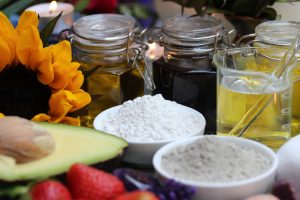 How do I use essential oils? I use essential oils in various ways. ‘Less’ is often ‘more’ when applying essential oils; very small amounts can be incredibly effective.
How do I use essential oils? I use essential oils in various ways. ‘Less’ is often ‘more’ when applying essential oils; very small amounts can be incredibly effective.
It is easy to become chemically saturated with a product, any product, if it is overused, but especially essential oils because they are so concentrated.
Thus, essential oils are best applied in moderation, varying the oils used; for example, I don’t use the same oil repeatedly, I select alternatives and vary the oils I blend together – doing this reduces potential for sensitisation
I wear small amounts of essential oil as perfume on my clothes or in my hair, rather than on my skin. I add small amounts of essential oil to skin care remedies, and make up non-scented creams, lotions and ointments to allow for essential oil breaks – remember, carefully selected vegetable oils have amazing skin care qualities of their own – and apply the same principle for face-masks and hair products (non-scented shampoo or conditioner). This way, the benefits of essential oils are fully realised without saturating the body.
Some oils are best kept as first aid remedies and applied if and when required – tea tree and lavender are good first aid standby’s.
Using Essential Oils as household cleansers
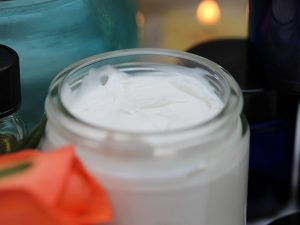
Environmental perfumes instil an ambience, a particular theme or mood, when gently diffused into the atmosphere in inspired bursts on occasion.
Essential oils seem far too precious to use as house cleaners (see below), however, they are valuable ‘fumigants’ – dried herbs, such as sage, can be ‘smoked’ or ‘smudged’ to the same end – close doors and windows for up to thirty minutes during fumigation and leave the room, then return and open up windows and doors.
Daily cleanliness and hygiene are better served with soap and water – we build our immune system through coming into contact with germs and bacteria and by allowing certain minor infections and illnesses to ‘run their course’; the troops are more effective when reserved for ‘battle’ rather than a minor skirmish. Gentle oils, such as lavender, can be applied moderately as preventives (but, even so, still not used constantly).
Using Essential Oils in food
I might use one or two drops of an essential oil to flavour foods or deserts, especially citrus oils, peppermint or, extravagantly, rose. However, I firmly believe that plants, herbs, spices and edible flowers are best consumed in their whole-plant form, either fresh or dried; flavonoids and minerals are not distillable, but significantly contribute to a plants nutritional, healing, and anti-oxidant value.
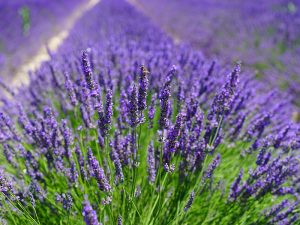 Hundreds of pounds of plant material is required to produce a relatively small amount of essential oil, thus, it is important to be mindful of the ecological footprint incurred when producing and consuming essential oils (such as, sustainable farming or wild harvest methods, sourcing and using locally grown and distilled essential oils, optimum distillation conditions, and so on). Nature provides essential oils in very small amounts in their natural form; thus, we should take a ‘leaf’ from natures book and use essential oils sparingly and sustainably, reserving their intense use for acute short-term scenarios (such as, occasional environmental cleansing and fumigation, or remedies for ‘flu, infections, viruses, and to support mood and emotion as and when required, and so on – perfumes should be worn sparingly, subtly, as a treasure, a lovely gift).
Hundreds of pounds of plant material is required to produce a relatively small amount of essential oil, thus, it is important to be mindful of the ecological footprint incurred when producing and consuming essential oils (such as, sustainable farming or wild harvest methods, sourcing and using locally grown and distilled essential oils, optimum distillation conditions, and so on). Nature provides essential oils in very small amounts in their natural form; thus, we should take a ‘leaf’ from natures book and use essential oils sparingly and sustainably, reserving their intense use for acute short-term scenarios (such as, occasional environmental cleansing and fumigation, or remedies for ‘flu, infections, viruses, and to support mood and emotion as and when required, and so on – perfumes should be worn sparingly, subtly, as a treasure, a lovely gift).
It takes 35 pounds of lavender flowers to produce just 15ml of essential oil (or approximately 300 drops), 2,500 to 4,000 kg of rose petals to produce just 1 kg of rose essence. Just one drop of essential oil is equivalent to 15-40 cups of medicinal tea or up to 10 teaspoons of tincture.
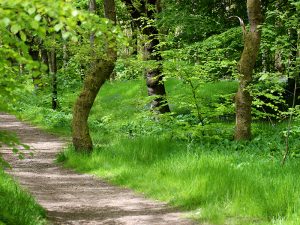
Balance and variety is key in terms of maintaining health, wellness and fitness. This can be achieved in various ways: meditation; walking in nature; yoga and gentle stretching exercises.
I confess I am not a ‘sporty person’ and have never enjoyed going to the gym, but benefit from the flow of movement through walking and doing gentle exercise. I have been a vegetarian since I was seventeen and try to eat mainly fresh whole foods – although I do love chocolate.
Essential oils are my companions, but I apply these in respectful moderation.
I try to balance my time and activity so I move my mode between working, resting, nourishing, socialising, exercising, creating, and helping. I don’t like to tell anyone else how to live their lives, but I think we help each other by being consciously compassionate, living from our best intention, and ’being present’.
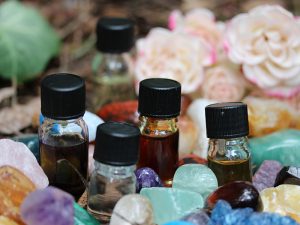 You will find much more information about about essential oils here:
You will find much more information about about essential oils here:
My books provide comprehensive information about applying essential oils safely and effectively (look out for my next book, Healing with Essential Oils, which will be published by Inner Traditions Bear & Co. early 2022).
Find out more about my books here
